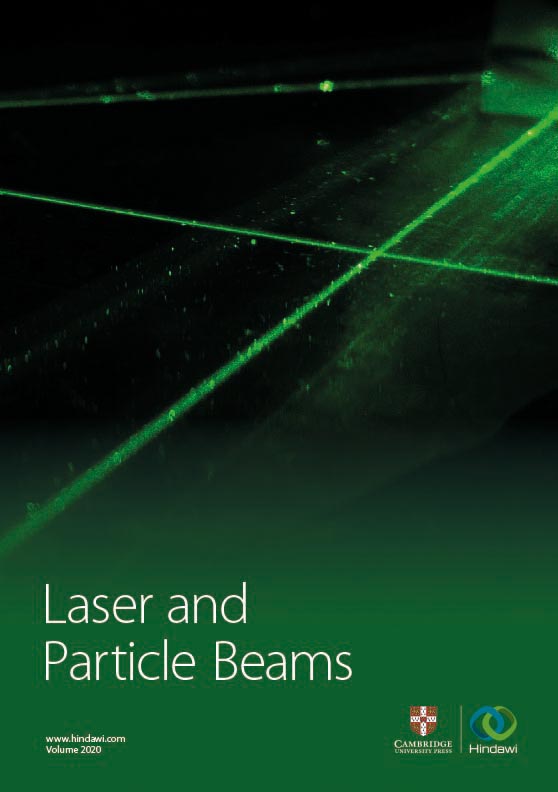 View fulltext
View fulltext
In order to minimize the initial energy storage of tens of MA-class Z-pinch accelerators, an intelligent optimization method was developed based on the transmission line code circuit model and PSOGSA algorithm. Using several input parameters, the four overall parameters of the Z-pinch accelerator could be fast determined, including the connection and parallel combination of LTD cavities, the outer radius of the stack-MITL system, and electrical length of monolithic radial transmission lines. The optimization method has been verified by comparing the results with the Z-300 and Z-800 conceptual designs. By means of this intelligent optimization, some factors that affect the initial energy storage on high-current Z-pinch accelerators have been investigated, such as the operating electrical fields, the diameter of the stack-MITL system, and the inner diameter of the LTD cavity. The suggestions for designing relatively low-cost, efficient LTD-based accelerators have been proposed.
Fused silica is an optical material with excellent performance, and it is widely used in the fabrication of optics in various high-power laser systems. With the gradual improvement of laser systems, the quality of optics becomes crucial. Taking magnetorheological finishing (MRF), ion beam sputtering etching (IBSE), and advanced mitigation processing (AMP) as the means, this work focuses on exploring the damage characteristics evolution of fused silica under different techniques. In this work, IBSE technique was used to determinedly polish the optical surface after removing damage layer by MRF technique, and AMP technique was applied to etch the surface with a certain depth. Then, 10 J/cm2 (355 nm, 5 ns) laser was used to irradiate the optical surface, and the damage density of optics maintained at a low level, about 0.001/mm2, which proves that MRF, IBSE, and AMP techniques can effectively improve the laser damage resistance of optics.
Proton-boron fusion would offer considerable advantages for the purpose of energy production as the reaction is aneutronic and does not involve radioactive species. Its exploitation, however, appears to be particularly challenging due to the low reactivity of the H-11B fuel at temperatures up to 100 keV. Fusion chain-reaction concepts have been proposed as possible means to overcome this limitation. Relevant findings are reviewed in this article. Energy-amplification processes are also presented, which are of interest for beam-fusion experiments and fast ignition of H-11B fuel. Directions for further work are outlined as well.
In order to establish a compact all-optical Thomson scattering source, experimental studies were conducted on the 45 TW Ti: sapphire laser facility. By including a steel wafer, mixed gas, and plasma mirror into a double-exit jet, several mechanisms, such as shock-assisted ionization injection, ionization injection, and driving laser reflection, were integrated into one source. So, the source of complexity was remarkably reduced. Electron bunches with central energy fluctuating from 90 to 160 MeV can be produced. Plasma mirrors were used to reflect the driving laser. The scattering of the reflected laser on the electron bunches led to the generation of X-ray photons. Through comparing the X-ray spots under different experimental conditions, it is confirmed that the X-ray photons are generated by Thomson scattering. For further application, the energy spectra and source size of the Thomson scattering source were measured. The unfolded spectrum contains a large amount of low-energy photons besides a peak near 67 keV. Through importing the electron energy spectrum into the Monte Carlo simulation code, the different contributions of the photons with small and large emitting angles can be used to explain the origin of the unfolded spectrum. The maximum photon energy extended to about 500 keV. The total photon production was 107/pulse. The FWHM source size was about 12 μm.
Here, we report the generation of MeV alpha-particles from H-11B fusion initiated by laser-accelerated boron ions. Boron ions with maximum energy of 6 MeV and fluence of 109/MeV/sr@5 MeV were generated from 60 nm-thick self-supporting boron nanofoils irradiated by 1 J femtosecond pulses at an intensity of 1019 W/cm2. By bombarding secondary hydrogenous targets with the boron ions, 3 × 105/sr alpha-particles from H-11B fusion were registered, which is consistent with the theoretical yield calculated from the measured boron energy spectra. Our results demonstrated an alternative way toward ultrashort MeV alpha-particle sources employing compact femtosecond lasers. The ion acceleration and product measurement scheme are referential for the studies on the ion stopping power and cross section of the H-11B reaction in solid or plasma.
The proton-boron (p 11 B) reaction is regarded as the holy grail of advanced fusion fuels, where the primary reaction produces 3 energetic α particles. However, due to the high nuclear bounding energy and bremsstrahlung energy losses, energy gain from the p 11 B fusion is hard to achieve in thermal fusion conditions. Owing to advances in intense laser technology, the p11 B fusion has drawn renewed attention by using an intense laser-accelerated proton beam to impact a boron-11 target. As one of the most influential works in this field, Labaune et al. first experimentally found that states of boron (solid or plasma) play an important role in the yield of α particles. This exciting experimental finding rouses an attempt to measure the nuclear fusion cross section in a plasma environment. However, up to now, there is still no quantitative explanation. Based on large-scale, fully kinetic computer simulations, the inner physical mechanism of yield increment is uncovered, and a quantitative explanation is given. Our results indicate the yield increment is attributed to the reduced energy loss of the protons under the synergetic influences of degeneracy effects and collective electromagnetic effects. Our work may serve as a reference for not only analyzing or improving further experiments of the p 11 B fusion but also investigating other beam-plasma systems, such as ion-driven inertial confinement fusions.








